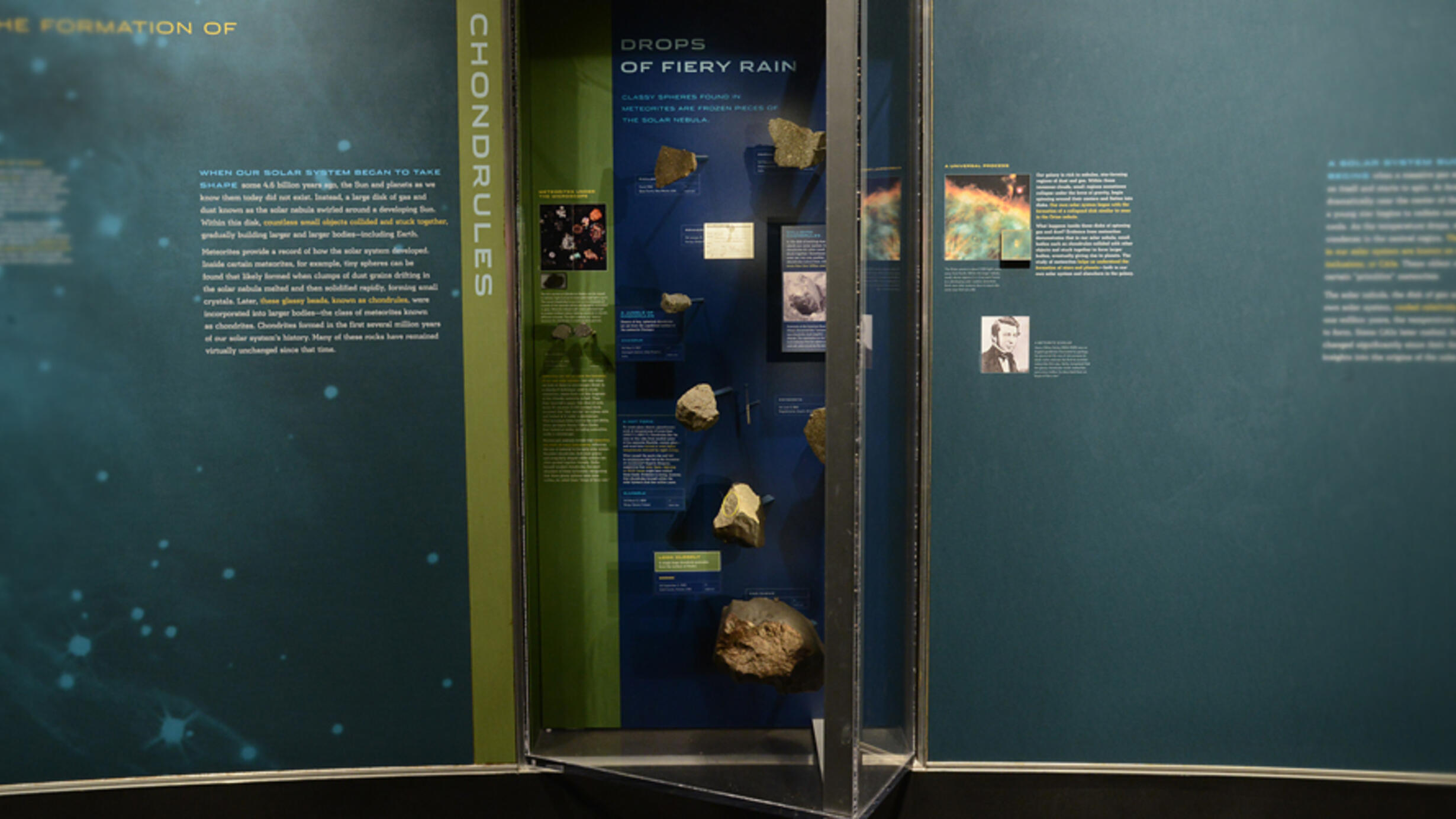Chondrules
Part of Hall of Meteorites.

When our solar system began to take shape some 4.6 billion years ago, the Sun and planets as we know them today did not exist. Instead, a large disk of gas and dust known as the solar nebula swirled around a developing Sun. Within this disk, countless small objects collided and stuck together, gradually building larger and larger bodies-including Earth.
Meteorites provide a record of how the solar system developed. Inside certain meteorites, for example, tiny spheres can be found that likely formed when clumps of dust grains drifting in the solar nebula melted and then solidified rapidly, forming small crystals. Later, these glassy beads, known as chondrules, were incorporated into larger bodies-the class of meteorites known as chondrites. Chondrites formed in the first several million years of our solar system's history. Many of these rocks have remained virtually unchanged since that time.
C.R.O, Dell, Rice Unniversity/NASA